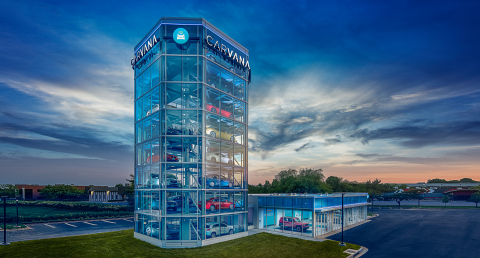Carvana's Monster Q2 is No Joke: What's Next for This Survivor Among Tech-Driven Online Dealers?
September 26, 2024
Carvana (CVNA) delivered impressive financial results for Q2 2024, showing strong growth across key performance indicators. Retail unit sales jumped 33% year-over-year, reaching 101,440 units, underscoring the company's expansion and robust consumer demand. Revenue rose 15% to $3.41 billion. One notable figure was Carvana's Adjusted EBITDA margin, which more than doubled from 5.2% to 10.4%, totaling $355 million. However, Warren Buffett's well-known skepticism toward this metric may apply to Carvana, given its substantial debt load exceeding $4 billion, which EBITDA does not account for.
The most striking result was Carvana's gross profit per unit (GPU), which surged by $529 to $7,049, significantly outpacing industry standards. For comparison, CarMax reported a Q2 gross profit per retail used unit of $2,251. These results mark the second consecutive quarter of a turnaround for Carvana, further highlighted by its positive net income of $48 million for Q2

The Core of Carvana's Success: Logistics, Not Dealerships
The key question everyone is asking is: how did Carvana achieve such an impressive gross profit per unit (GPU)? The answer may be rooted in its unique business model. Unlike traditional car dealerships, Carvana operates without the overhead costs of physical dealership locations. Instead, the company has around 40 Vending Machine towers scattered across the U.S., though these are primarily marketing tools. It's estimated that only a small percentage of sales are completed through these vending machines, with the majority of vehicles delivered directly to customers' homes. Essentially, Carvana functions as a logistics company, efficiently moving cars nationwide without the fixed costs associated with retail locations.
During the Q2 earnings call, CEO Ernest Garcia and CFO Mark Jenkins expressed optimism about continued improvements in gross profit per unit (GPU) in the coming quarters, though they provided little detail on the sources of these improvements. We anticipate that any future gains will be marginal, likely dependent on the company's ability to achieve greater economies of scale.
Partnerships and the Road Ahead
The greatest challenge in predicting Carvana’s future growth is determining how much the company can realistically scale its business. Where will the millions of units that CEO Ernest Garcia projects be sold each year come from? At CarFinderZone, we estimate that as of August 31, 2024, around 10% of the vehicles listed on Carvana's website were sourced from Hertz. While Carvana's $2.2 billion acquisition of ADESA’s physical auction business in 2022—making it the second-largest auction operator in the U.S.—provides the company with a key market advantage, this benefit has already been factored into its current performance. The majority of Carvana’s vehicle supply still comes from purchasing directly from its retail customers, raising questions about how scalable that approach truly is.
The recent earnings call offered few specifics, though it hinted at new opportunities on the horizon. At its core, Carvana operates as an e-commerce platform with a robust logistics network—essentially an Amazon for cars, for the time being.

One potential growth area lies in partnerships with both new and established auto manufacturers in the U.S. Many electric vehicle (EV) companies, such as Tesla and Rivian, have bypassed traditional dealership models, which could present an opportunity for Carvana to collaborate with these manufacturers and support their direct-to-consumer approach. In the medium to long term, it will also be worth monitoring how Chinese EV manufacturers enter the U.S. market and whether this could present additional opportunities for Carvana.
At CarFinderZone’s dynamic market pulse, we expect a 10% increase in Carvana’s retail unit sales for Q3 compared to Q2. Barring any major economic disruptions late in the quarter, we expect Carvana’s numbers to remain strong into the next reporting period.


Copy link to clipboard